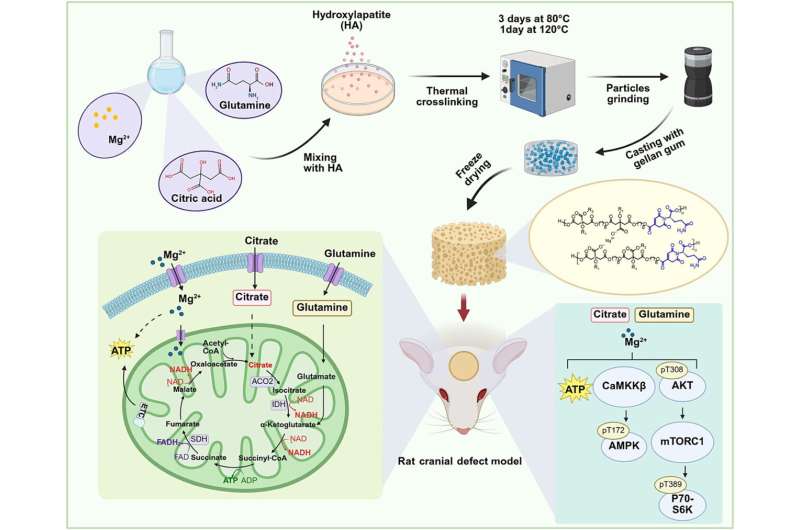Collaborating with orthopedic surgeons, a team led by biomedical engineering researchers at Penn State created CitraBoneQMg, an implantable biodegradable scaffold to support bone regrowth made by combining magnesium and glutamine with citric acid. They published research on their implant, for which they filed a U.S. patent application, in Science Advances.
“By integrating magnesium and glutamine—two small molecules found naturally in the body and in food—with citric acid, we found that the molecules work together to promote bone growth by encouraging increased intracellular energy metabolism,” said first author Hui Xu, a doctoral student in biomedical engineering, who is advised by co-corresponding author Su Yan, assistant research professor of biomedical engineering.
The researchers found that adding magnesium and glutamine to a traditional citric acid only–based implant, which was approved by the U.S. Food and Drug Administration and on the market, increased intracellular energy and helped regulate two energy pathways that are essential for bone growth, AMPK and mTORC1. The pathways act as control systems inside the cell, balancing fuel use so cells have the energy to make new bone.

